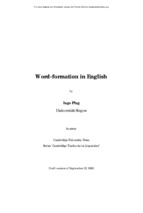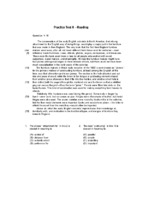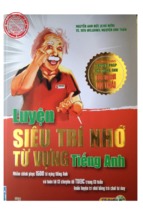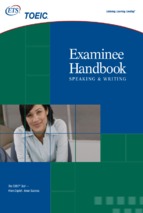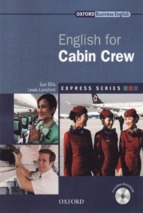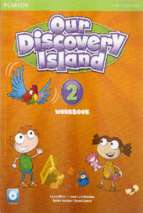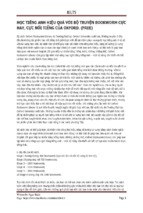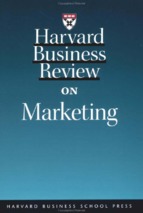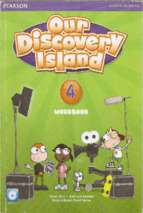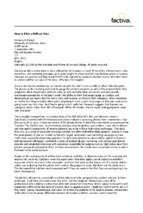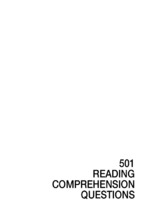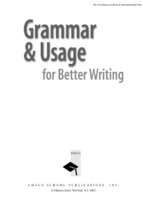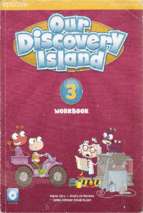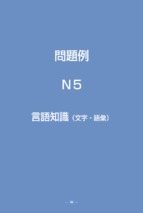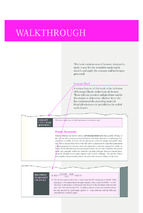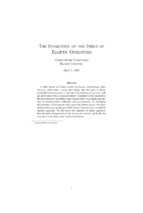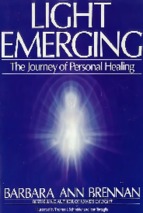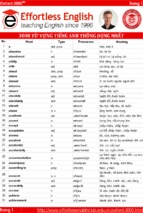Management
Accounting
Time allowed: 2 hours
ALL FIFTY questions are compulsory and MUST be attempted.
Do NOT open this paper until instructed by the supervisor.
This question paper must not be removed from the examination hall.
The Association of Chartered Certified Accountants
Paper F2
Fundamentals Pilot Paper – Knowledge module
ALL 50 questions are compulsory and MUST be attempted.
1
The following break-even chart has been drawn showing lines for total cost (TC), total variable cost (TVC), total fixed
cost (TFC) and total sales revenue (TSR):
£
TSR
TC
TVC
TFC
0
675
1,200
What is the margin of safety at the 1,700 units level of activity?
A
B 300 units
C
1,500
1,700
Units
200 units
500 units
D 1,025 units
(2 marks)
2
The following assertions relate to financial accounting and to cost accounting:
(i) The main users of financial accounting information are external to an organisation.
(ii) Cost accounting is that part of financial accounting which records the cash received and payments made by an
organisation.
Which of the following statements are true?
A Assertions (i) and (ii) are both correct.
B Only assertion (i) is correct.
C Only assertion (ii) is correct.
3
(1 mark)
Regression analysis is being used to find the line of best fit (y = a + bx) from eleven pairs of data. The calculations
have produced the following information:
Σx = 440, Σy = 330, Σx2 = 17,986, Σy2 = 10,366, Σxy = 13,467 and b = 0.69171
What is the value of ‘a’ in the equation for the line of best fit (to 2 decimal places)?
A 0.63
B 0.69
C 2.33
D 5.33
(2 marks)
�
4
The purchase price of a stock item is $25 per unit. In each three month period the usage of the item is 20,000 units.
The annual holding costs associated with one unit equate to 6% of its purchase price. The cost of placing an order for
the item is $20.
What is the Economic Order Quantity (EOQ) for the stock item to the nearest whole unit?
A 730
B 894
C 1,461
D 1,633
(2 marks)
5
A company uses an overhead absorption rate of $3.50 per machine hour, based on 32,000 budgeted machine hours
for the period. During the same period the actual total overhead expenditure amounted to $108,875 and 30,000
machine hours were recorded on actual production.
By how much was the total overhead under or over absorbed for the period?
A Under absorbed by $3,875
B Under absorbed by $7,000
C Over absorbed by $3,875
D Over absorbed by $7,000
(2 marks)
6
For which of the following is a profit centre manager responsible?
A Costs only
B Revenues only
C Costs and revenues.
(1 mark)
7
An organisation has the following total costs at two activity levels:
Activity level (units)
Total costs ($)
Variable cost per unit is constant within this range of activity but there is a step up of $5,000 in the total fixed costs
when the activity exceeds 17,500 units.
What is the total cost at an activity of 20,000 units?
A $155,000
B $158,000
C $160,000
16,000
135,000
22,000
170,000
D $163,000
(2 marks)
�
8
A company manufactures and sells a single product. In two consecutive months the following levels of production and
sales (in units) occurred:
Sales
Production
Month 1 Month 2
3,800
4
,400
3,900
4
,200
The opening inventory for Month 1 was 400 units. Profits or losses have been calculated for each month using both
absorption and marginal costing principles.
Which of the following combination of profits and losses for the two months is consistent with the above data?
A
200
4,400
B
(400)
4,400
C
200
3,200
D
(400)
3,200
Absorption costing profit/(loss)
Month 1
Month 2
$
$
Marginal costing profit/(loss)
Month 1
Month 2
$
$
(400)
3,200
200
3,200
(400)
4,400
200
4,400
(2 marks)
9
Which of the following best describes a flexible budget?
A
A budget which shows variable production costs only.
B
A monthly budget which is changed to reflect the number of days in the month.
C A budget which shows sales revenue and costs at different levels of activity.
D A budget that is updated halfway through the year to incorporate the actual results for the first half of the year.
(2 marks)
10 Information relating to two processes (F and G) was as follows:
Process
F
G
Normal loss as
% of input
8
5
Input
litres
65,000
37,500
Output
litres
58,900
35,700
For each process, was there an abnormal loss or an abnormal gain?
Process F
Process G
A Abnormal gain Abnormal gain
B Abnormal gain Abnormal loss
C Abnormal loss Abnormal gain
D Abnormal loss
Abnormal loss
(2 marks)
�
11 An organisation manufactures a single product which is sold for $80 per unit. The organisation’s total monthly fixed
costs are $99,000 and it has a contribution to sales ratio of 45%. This month it plans to manufacture and sell 4,000
units.
What is the organisation’s margin of safety this month (in units)?
A
1,250
B
1,750
C
2,250
D 2,750
(2 marks)
12 Which one of the following should be classified as indirect labour?
A Assembly workers on a car production line
B Bricklayers in a house building company
C Machinists in a factory producing clothes
D Forklift truck drivers in the stores of an engineering company.
(2 marks)
13 A company is evaluating a project that requires 400kg of raw material X. The company has 150kg of X in stock that
were purchased six months ago for $55 per kg. The company no longer has any use for X. The inventory of X could be
sold for $40 per kg. The current purchase price for X is $53 per kg.
What is the total relevant cost of raw material X for the project?
A $17,950
B $19,250
C $21,200
D $21,500
(2 marks)
14 Which of the following is NOT a feasible value for the correlation coefficient?
A +1.4
B +0.7
C
0
D −0.7
(2 marks)
15 The following statements relate to aspects of budget administration:
Statement (1): An important task of a budget committee is to ensure that budgets are properly coordinated.
Statement (2): A budget manual is the document produced at the end of the budget setting process.
Which of the following is true?
A Only statement (1) is correct.
B Only statement (2) is correct.
C Both statements are correct.
(1 mark)
�
16 Up to a given level of activity in each period the purchase price per unit of a raw material is constant. After that point
a lower price per unit applies both to further units purchased and also retrospectively to all units already purchased.
Which of the following graphs depicts the total cost of the raw materials for a period?
£
A
0
£
£
B
0
C
0
£
D
0
(2 marks)
17 A manufacturing organisation incurs costs relating to the following:
(1) Commission payable to salespersons.
(2) Inspecting all products.
(3) Packing the products at the end of the manufacturing process prior to moving them to the warehouse.
Which of these costs are classified as production costs?
A (1) and (2) only
B (1) and (3) only
C (2) and (3) only
D (1), (2) and (3)
(2 marks)
18 Which of the following is correct with regard to expected values?
A Expected values provide a weighted average of anticipated outcomes.
B The expected value will always equal one of the possible outcomes.
C Expected values will show the decision maker’s attitude to risk.
D The expected value will never equal one of the possible outcomes.
�
(2 marks)
19 There is a 60% chance that a company will make a profit of $300,000 next year and a 40% chance of making a loss
of $400,000.
What is the expected profit or loss for next year?
A $120,000 Loss
B $20,000 Loss
C $20,000 Profit
D $120,000 Profit
(2 marks)
20 A company’s budgeted sales for last month were 10,000 units with a standard selling price of $20 per unit and a
standard contribution of $8 per unit. Last month actual sales of 10,500 units at an average selling price of $19.50 per
unit were achieved.
What were the sales price and sales volume contribution variances for last month?
Sales price variance ($)
A 5,250 Adverse
Sales volume contribution variance ($)
4,000 Favourable
B 5,250 Adverse
C 5,000 Adverse
4,000 Favourable
D 5,000 Adverse
4,000 Adverse
4,000 Adverse
(2 marks)
21 A company manufactures and sells one product which requires 8 kg of raw material in its manufacture. The budgeted
data relating to the next period are as follows:
Units
Sales
19,000
Opening inventory of finished goods
4,000
Closing inventory of finished goods
3,000
Kg
Opening inventory of raw materials
50,000
Closing inventory of raw materials
53,000
What is the budgeted raw material purchases for next period (in kg)?
A 141,000
B 147,000
C 157,000
D 163,000
(2 marks)
22 The following statements refer to spreadsheets:
(i) A spreadsheet is the most suitable software for the storage of large volumes of data.
(ii) A spreadsheet could be used to produce a flexible budget.
(iii) Most spreadsheets contain a facility to display the data in them within them in a graphical form.
Which of these statements are correct?
A (i) and (ii) only
B (i) and (iii) only
C (ii) and (iii) only
D (i), (ii) and (iii)
(2 marks)
�
23 A company always determines its order quantity for a raw material by using the Economic Order Quantity (EOQ)
model.
What would be the effects on the EOQ and the total annual holding cost of a decrease in the cost of ordering a
batch of raw material?
E O Q
A Higher
Annual holding cost
Lower
B
C Lower Higher
Higher
Higher
D Lower Lower
(2 marks)
24 Which one of the following is most likely to operate a system of service costing?
A A printing company
B A hospital
C A firm of solicitors.
(1 mark)
25 The following budgeted information relates to a manufacturing company for next period:
Production
Sales
Units
14,000
12,000
Fixed production costs
Fixed selling costs
$
63,000
12,000
The normal level of activity is 14,000 units per period.
Using absorption costing the profit for next period has been calculated as $36,000.
What would the profit for next period be using marginal costing?
A $25,000
B $27,000
C $45,000
D $47,000
(2 marks)
26 A company manufactures a single product which it sells for $20 per unit. The product has a contribution to sales ratio
of 40%. The company’s weekly break- even point is sales revenue of $18,000.
What would be the profit in a week when 1,200 units are sold?
A $1,200
B $2,400
C $3,600
D $6,000
(2 marks)
�
27 The following graph relates to a linear programming problem:
Y
(1)
(2)
(3)
0
X
The objective is to maximise contribution and the dotted line on the graph depicts this function. There are three
constraints which are all of the “less than or equal to” type which are depicted on the graph by the three solid lines
labelled (1), (2) and (3).
At which of the following intersections is contribution maximised?
A Constraints (1) and (2)
B Constraints (2) and (3)
C Constraints (1) and (3)
D Constraint (1) and the x-axis
(2 marks)
28 In an organisation manufacturing a number of different products in one large factory, the rent of that factory is an
example of a direct expense when costing a product.
Is this statement true or false?
A
True
B False
(1 mark)
�
29 A company operates a process in which no losses are incurred. The process account for last month, when there was
no opening work-in-progress, was as follows:
Process Account
Costs arising
$
624,000
Finished output
(10,000 units)
Closing work-in progress (4,000 units)
624,000
The closing work-in-progress was complete to the same degree for all elements of cost.
What was the percentage degree of completion of the closing work-in-progress?
A 12%
B 30%
C 40%
D 75%
$
480,000
144,000
624,000
(2 marks)
30 A company manufactures and sells two products (X and Y) both of which utilise the same skilled labour. For the
coming period, the supply of skilled labour is limited to 2,000 hours. Data relating to each product are as follows:
Product X Y
Selling price per unit
$20
$40
Variable cost per unit
$12
$30
Skilled labour hours per unit
2
4
Maximum demand (units) per period
800
400
In order to maximise profit in the coming period, how many units of each product should the company manufacture
and sell?
A 200 units of X and 400 units of Y
B 400 units of X and 300 units of Y
C 600 units of X and 200 units of Y
D 800 units of X and 100 units of Y
(2 marks)
31 The following statements refer to organisations using job costing:
(i) Work is done to customer specification.
(ii) Work is usually completed within a relatively short period of time.
(iii) Products manufactured tend to be all identical.
Which two of these statements are CORRECT?
A (i) and (ii)
B (i) and (iii)
C (ii) and (iii)
(1 mark)
10
The following information relates to questions 32 and 33:
A company uses standard costing and the standard variable overhead cost for a product is:
6 direct labour hours @ $10 per hour
Last month when 3,900 units of the product were manufactured, the actual expenditure on variable overheads was
$235,000 and 24,000 hours were actually worked.
32 What was the variable overhead expenditure variance for last month?
A $5,000 Adverse
B $5,000 Favourable
C $6,000 Adverse
D $6,000 Favourable
(2 marks)
33 What was the variable overhead efficiency variance for last month?
A $5,000 Adverse
B $5,000 Favourable
C $6,000 Adverse
D $6,000 Favourable
(2 marks)
34 When a manufacturing company operates a standard marginal costing system there are no fixed production overhead
variances.
Is this statement true or false?
A
True
B False
(1 mark)
35 A company operates a standard costing system. The variance analysis for last month shows a favourable materials price
variance and an adverse labour efficiency variance.
The following four statements, which make comparisons with the standards, have been made:
(1) Inferior quality materials were purchased and used.
(2) Superior quality materials were purchased and used.
(3) Lower graded workers were used on production.
(4) Higher graded workers were used on production.
Which statements are consistent with the variance analysis?
A (1) and (3)
B (1) and (4)
C (2) and (3)
D (2) and (4)
(2 marks)
11
36 Which of the following best describes a principal budget factor?
A A factor that affects all budget centres.
B A factor that is controllable by a budget centre manager.
C A factor which limits the activities of an organisation.
D A factor that the management accountant builds into all budgets.
(2 marks)
37 Four vertical lines have been labelled G, H, J and K at different levels of activity on the following profit-volume chart:
K
0
Output
G
H
J
Which line represents the total contribution at that level of activity?
A Line G
B Line H
C Line J
D Line K
(2 marks)
38 Data is information that has been processed in such a way as to be meaningful to its recipients.
Is this statement true or false?
A
True
B False
(1 mark)
12
39 Two products G and H are created from a joint process. G can be sold immediately after split-off. H requires further
processing into product HH before it is in a saleable condition. There are no opening inventories and no work in
progress of products G, H or HH. The following data are available for last period:
Total joint production costs
Further processing costs of product H
$
350,000
66,000
Product
G
HH
Production
Closing inventory
units units
420,000
20,000
330,000
30,000
Using the physical unit method for apportioning joint production costs, what was the cost value of the closing
inventory of product HH for last period?
A $16,640
B $18,625
C $20,000
D $21,600
(2 marks)
40 A company purchased a machine several years ago for $50,000. Its written down value is now $10,000. The machine
is no longer used on normal production work and it could be sold now for $8,000.
A project is being considered which would make use of this machine for six months. After this time the machine would
be sold for $5,000.
What is the relevant cost of the machine to the project?
A $2,000
B $3,000
C $5,000
D $10,000
(2 marks)
41 A company operates a standard absorption costing system. The standard fixed production overhead rate is $15 per
hour.
The following data relate to last month:
Actual hours worked
5,500
Budgeted hours
5,000
Standard hours for actual production
4,800
What was the fixed production overhead capacity variance?
A $7,500 Adverse
B $7,500 Favourable
C $10,500 Adverse
D $10,500 Favourable
(2 marks)
13
42 The following statements relate to relevant cost concepts in decision-making:
(i) Materials can never have an opportunity cost whereas labour can.
(ii) The annual depreciation charge is not a relevant cost.
(iii) Fixed costs would have a relevant cost element if a decision causes a change in their total expenditure
Which statements are correct?
A (i) and (ii) only
B (i) and (iii) only
C (ii) and (iii) only
D (i), (ii) and (iii)
(2 marks)
43 A contract is under consideration which requires 600 labour hours to complete. There are 350 hours of spare labour
capacity for which the workers are still being paid the normal rate of pay. The remaining hours for the contract can
be found either by weekend overtime working paid at double the normal rate of pay or by diverting labour from other
production. This other production makes a contribution, net of labour cost, of $5 per hour. The normal rate of pay is
$9 per hour.
What is the total relevant cost of labour for the contract?
A $1,250
B $3,500
C $4,500
D $4,900
(2 marks)
44 An organisation operates a piecework system of remuneration, but also guarantees its employees 80% of a time-based
rate of pay which is based on $20 per hour for an eight hour working day. Three minutes is the standard time allowed
per unit of output. Piecework is paid at the rate of $18 per standard hour.
If an employee produces 200 units in eight hours on a particular day, what is the employee’s gross pay for that
day?
A
$128
B
$144
C
$160
D $180
(2 marks)
45 A semi-variable cost is one that, in the short term, remains the same over a given range of activity but beyond that
increases and then remains constant at the higher level of activity.
Is this statement true or false?
A
True
B False
(1 mark)
14
46 A factory consists of two production cost centres (P and Q) and two service cost centres (X and Y). The total allocated
and apportioned overhead for each is as follows:
P
$95,000
Q
$82,000
X
$46,000
Y
$30,000
It has been estimated that each service cost centre does work for other cost centres in the following proportions:
P Q X
Y
Percentage of service cost centre X to
50 50 – –
Percentage of service cost centre Y to
30 60 10 –
The reapportionment of service cost centre costs to other cost centres fully reflects the above proportions.
After the reapportionment of service cost centre costs has been carried out, what is the total overhead for production
cost centre P?
A $124,500
B $126,100
C $127,000
D $128,500
(2 marks)
The following information relates to questions 47 and 48:
A company manufactures and sells two products (X and Y) which have contributions per unit of $8 and $20 respectively.
The company aims to maximise profit. Two materials (G and H) are used in the manufacture of each product. Each material
is in short supply – 1,000 kg of G and 1,800 kg of H are available next period. The company holds no inventories and it
can sell all the units produced.
The management accountant has drawn the following graph accurately showing the constraints for materials G and H.
Product Y
(units)
100
090
Material G
Material H
000
125
150
Product X
(units)
47 What is the amount (in kg) of material G and material H used in each unit of product Y?
A
B
C
Material G Material H
10
20
10
20
D
20
10
20
10
(2 marks)
15
48 What is the optimal mix of production (in units) for the next period?
A
Product X
0
B
50
C
60
D
125
Product Y
90
60
50
0
(2 marks)
49 The following statement refers to a quality of good information:
The cost of producing information should be greater than the value of the benefits of that information to management.
Is this statement true or false?
A
True
B False
(1 mark)
50 A company which operates a process costing system had work-in-progress at the start of last month of 300 units
(valued at £1,710) which were 60% complete in respect of all costs. Last month a total of 2,000 units were completed
and transferred to the finished goods warehouse. The cost per equivalent unit for costs arising last month was $10.
The company uses the FIFO method of cost allocation.
What was the total value of the 2,000 units transferred to the finished goods warehouse last month?
A $19,910
B
$20,000
C
$20,510
D $21,710
(2 marks)
16
Formulae Sheet
Regression analysis
a=
∑y b∑x
n
n
∑y b∑x
a= n∑xy-∑x∑y
n
n
2
n∑x2 -(∑x)
∑y b∑x
a= nn∑xy-∑x∑y
n
b=
n∑xy-∑x∑y
2
n∑x -(∑x)2
r=
2 n∑xy-∑x∑y
(n∑xb=
-(∑x)2 )(n∑y 2 -(∑y)2 )
n∑x2 -(∑x)2
n∑xy-∑x∑y
r=
2
2
2C0D
(
n
∑x
-(∑x)
)(n∑y 2 -(∑y)2 )
=
Economic order n∑xy-∑x∑y
quantity
Ch r=
(n∑x2 -(∑x)2 )(n∑y 2 -(∑y)2 )
2C0D
=
2C0D
Ch
=
2C0D
D
Ch (1-= ) C
h
R batch
Economic
2C0Dquantity
=
D
Ch (12C
DR)
0
=
D
Ch (1- )
R
b=
17
18
Answers
19
Pilot Paper F2
Management Accounting
Answers
Summarised
1
2
3
4
5
6
7
8
9
10
11
12
13
14
15
16
17
18
19
20
21
22
23
24
25
C
B
C
C
A
C
C
C
C
C
A
D
B
A
A
D
C
A
C
A
B
C
D
B
B
26 B
27 D
28 B
29 D
30 D
31 A
32 B
33 C
34 B
35 A
36 C
37 C
38 B
39 C
40 B
41 B
42 C
43 B
44 D
45 B
46 D
47 A
48 A
49 B
50 A
In detail
1
C
2
B
3 C
a = (Σy ÷ n) − [(bΣx) ÷ n] = (330 ÷ 11) − [(0.69171 × 440) ÷ 11]
= (30 −27.6684)
= 2.3316 (2.33 to 2 decimal places)
4
{[ 2 × 20 × (4 ×20,000) ] ÷ [0.06 ×25]}0.5 = 1,461 units
C
5 A
Actual cost
Absorbed cost (30,000 × 3.50)
Under absorption
$108,875
$105,000
$ 3,875
6
C
7
C
Variable cost per unit: [(170,000 − 5,000) − 135,000] ÷ (22,000 − 16,000) = $5
Total fixed cost (below 17,500 units): [135,000 − (16,000 × 5)] = $55,000
Total cost for 20,000 units: 55,000 + 5,000 + (20,000 × 5) = $160,000
8
C
Month 1: Production > Sales Absorption costing profit > Marginal costing profit
Month 2: Sales > Production Marginal costing profit > absorption costing profit
A and C satisfy Month 1, C and D satisfy Month 2. Therefore C satisfies both.
9
C
20
- Xem thêm -


